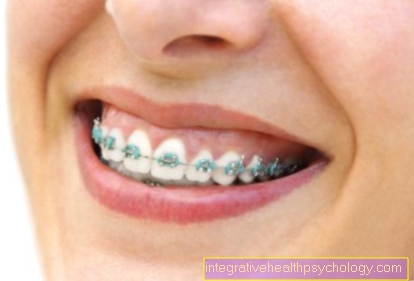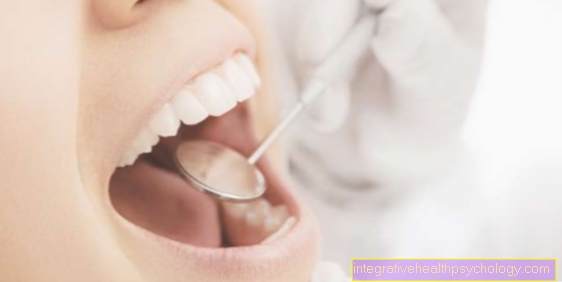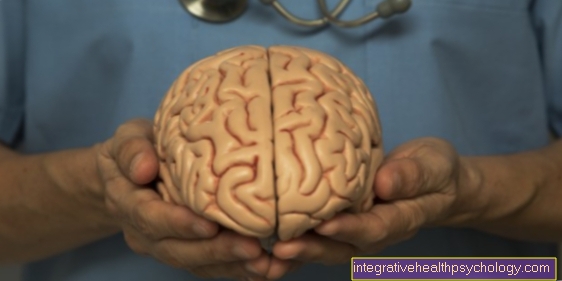Autism Tests - Which Are There?
introduction
The autism spectrum disorder is one of the pervasive developmental disorders that is primarily found in childhood. The main symptoms of an autism spectrum disorder are difficult social interaction and communication.
There are a number of tests that can help diagnose an autism disorder. Since this is very difficult and often represents a diagnosis of exclusion, the tests can only be of supportive meaning, but not conclusive. There are tests for children as well as questionnaires for their parents, although of course only honest answers from all those involved can help with the diagnosis.
A severe autism spectrum disorder is often diagnosed in childhood, but there are also specific tests for an autism spectrum disorder for adults, in which the milder forms of the disorder are usually diagnosed.
Since the diagnosis of an autism spectrum disorder proves to be very difficult and can often be masked by other psychological problems such as anxiety disorders, depression or ADHD, misdiagnoses are often made.

What tests are there for children?
There are several tests available for children that can help diagnose an autism spectrum disorder. What all tests have in common is that they target the child's social and language skills, as well as empathy and intelligence.
The most commonly used tests are the CARS, ARI-I and ADOS tests (ADOS test see below).
The CARS test stands for “Childhood Autism Rating Scale”. This is used to test motor and language skills, as well as social skills and empathy. It is important that the tasks given to the child are appropriate for the child's age.
Different situations are checked:
1. The child is placed in situations where it needs to interact with the examiner in certain ways. Attention is paid to the feeling of empathy, eye contact and behavior in conflict situations.
2. The child is encouraged to imitate language according to their age.
3. The child is placed in uncomfortable situations in which the child's affect is judged. That is, it is judged whether the child becomes inappropriately angry or whether the child is inappropriately indifferent.
4. The child's motor skills are checked. Here, fine motor skills are particularly important, which can be reduced or even absent in autistic children.
5. The child's ability to develop relationships with things is tested. This includes, for example, playing and humanizing a cuddly toy.
6. It is tested whether the child is able to adapt to different, also strange situations and to act appropriately in them. In many autistic children this ability is reduced, so that they need a lot of structure and repetitive processes in order to feel comfortable.
7. It is tested whether the child is able to establish eye contact with the examiner. Many autistic children avoid this.
8. Hearing is tested. Many autistic children do not listen to their own names. In the differential diagnosis, hearing loss or deafness must be excluded.
9. Smell, taste and the sensation of pain are recorded.
10. Fear responses are tested. This happens either through separation from parents or through scary objects.
11. The child's intelligence is tested. Depending on the type of autism spectrum disorder, the test may be below average or above average.
The ARI-I test is a questionnaire for parents. If possible, this test should always be carried out in parallel to other tests. This enables the child's deficits to be better assessed and a more precise estimate of how the child's behavior really is in everyday life.
Read more about this under Intelligence test
What tests are there for adults?
There are many questionnaires available for adults. Because adult behavior is more difficult to judge than that of children, these tests are most useful in making the diagnosis in adulthood.
If there is a severe form of autism, it is diagnosed in childhood. This implies that forms of autism are usually milder in adulthood and that those affected can lead a normal life despite the illness, even if this is characterized by restrictions. The most common limitations are seen in social interaction, in partnerships or at work.
ADOS test
The ADOS (Diagnostic Observation Scale for Autistic Disorders) is a test in which a trained examiner observes the child in different situations. The test can be taken from the age of two.
The child is exposed to various social situations in order to assess his behavior and to reveal social or linguistic deficits. If possible, the situations should be standardized in order to ensure that the test provides as objective a result as possible.
The ADOS test is a common test for children with a probable Austism Spectrum Disorder and is usually carried out by child psychiatrists or trained psychologists. It takes about 30 to 75 minutes.
Face test
The face test is one of the most famous tests related to autism.
Since an important symptom of Autism Spectrum Disorder is misunderstanding of other people's emotions and a reduced sense of empathy, this test aims to identify emotions. Here the patient is shown successively pictures of faces with the emotions happy, sad and angry, which he must recognize correctly. If the patient is unable to do so, this can corroborate the diagnosis of an autism spectrum disorder.
Which Doctor Will Test for Autism?
The so-called U-examinations at the pediatrician are provided for children. The child's health is checked at regular intervals, screening for common diseases and the child's development are monitored. There are examinations U1-U9 and J1.
The U1 takes place immediately after the birth by the midwife or a pediatrician. The rest of the U-examinations are carried out by the pediatrician, most of the time abnormal behavior of the child is noticed during this examination.
The further diagnosis and diagnosis is usually no longer carried out by the pediatrician, but by a child and adolescent psychiatrist.
It is also possible that parents themselves recognize abnormal behavior from their child. In this case, it makes sense to contact the treating pediatrician first, as they usually know the child from birth and the child concerned also has a relationship of trust with the doctor. The pediatrician can then take all further steps at his own discretion.
Read more about this under U 9 investigation














.jpg)














